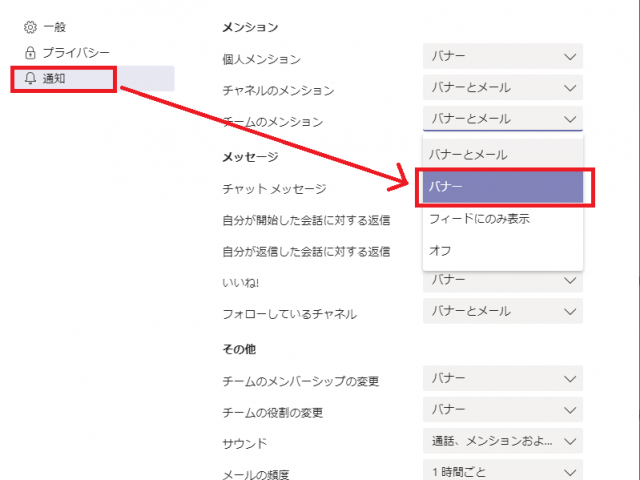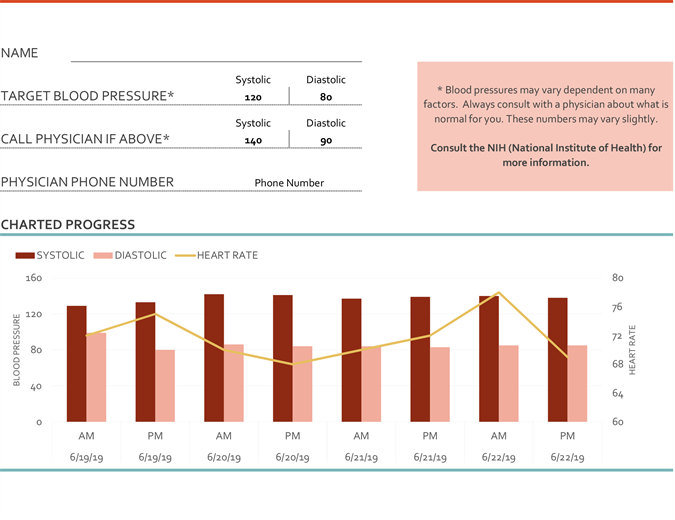We’re excited to introduce the Microsoft Teams for Education policy wizard, now available in the Microsoft Teams Admin C. 14.5K Announcing new H5P and OneNote integration to help bring interactive content to life. If you want to keep records of your work in one place or show a snapshot of your data, you can add a Visio diagram (also called a drawing) to a page in your OneNote notebook. In the world of books and binders, this option is the equivalent of making a copy of your diagram and attaching it. Set up OneNote integration.; 4 minutes to read; j; s; M; In this article. Gather your thoughts, ideas, plans and research in one single place with OneNote in model-driven Power Apps and customer engagement apps (Dynamics 365 Sales, Dynamics 365 Customer Service, Dynamics 365 Field Service, Dynamics 365 Marketing, and Dynamics 365 Project Service Automation).
The send to OneNote plugin in Outlook for PC and Mac is awesome. The problem is when you are not in front of a computer and need to tag an email for processing later when you are on other platforms. My approach to solve this is to use flagging of email and send that to my collection section in OneNote using Microsoft Flow. In that way, I know when I have processed it and I know I can find it again in OneNote for when I process my OneNote and create actionable tasks.
Here is how to get started with using Microsoft Flow for moving flagged emails to your Collection section in Microsoft OneNote that is stored in OneDrive for Business in Office 365.
- Log on to your Office 365 portal
- Click on the Flow icon to get started
- requires that Flow is enabled for your tenant and your user
- Search for Outlook, because that is our trigger
- Choose the trigger for when flagging an email in your inbox
- Click on Next Step and search for OneNote (Business)
- Choose create page in section
- Choose the notebook that is stored in OneDrive for Business
- Choose the section you want to store it in, which should be your collection section
- In order to get a good input from the email you need to paste in some HTML code in order to get subject as title and more info from the email in to OneNote
- Attachments will not be copied in to OneNote, I think it is a good thing, so that your notebook will not get bloated
- here is the HTML code you can paste in to the page content as body
- Should look like this
- From here, save the flow
- it takes 10-15 minutes for first run
- The free version runs every 15 minutes, the Office 365 flow version runs every 5 minutes
- For Office 365 the number of times a flow can run is tenant wide and is aggregated by the number of user licenses in the tenant and is 2000 times per user per month
- One user can consume a lot more runs than 2000, but the average is 2000 per user per month
- Read more her: https://flow.microsoft.com/en-us/pricing/#plan-feature-table
- The flow with flagging of emails are only run when you actually do the flagging, so you will only consume a run when you actually do the flagging

Check out my OneNote LifeHacks video from Ignite on how to set this up.
References
- Make sure you also check out my OneNote LifeHacks YouTube series
- Check out how I work with OneNote and GTD
- About OneNote, about GTD, about the Pomodoro Technique
Looking for coaching on being more productive with OneNote and get more stuff done, connect with me at CloudWay
-->You can inspect email attachments in your Exchange Online organization by setting up mail flow rules (also known as transport rules). Exchange Online offers mail flow rules that allow you to examine email attachments as a part of your messaging security and compliance needs. When you inspect attachments, you can then take action on the messages that were inspected based on the content or characteristics of those attachments. Here are some attachment-related tasks you can do by using mail flow rules:
Search for files with text that matches a pattern you specify, and add a disclaimer to the end of the message.
Inspect content within attachments and, if there are any keywords you specify, redirect the message to a moderator for approval before it's delivered.
Check for messages with attachments that can't be inspected and then block the entire message from being sent.
Check for attachments that exceed a certain size and then notify the sender of the issue, if you choose to prevent the message from being delivered.
Check whether the properties of an attached Office document match the values that you specify. With this condition, you can integrate the requirements of your mail flow rules and DLP policies with a third-party classification system, such as SharePoint or the Windows Server File Classification Infrastructure (FCI).
Create notifications that alert users if they send a message that has matched a mail flow rule.
Block all messages containing attachments. For examples, see Common attachment blocking scenarios for mail flow rules in Exchange Online.
Note
All of these conditions will scan compressed archive attachments.
Exchange Online admins can create mail flow rules in the Exchange admin center (EAC) at Mail flow > Rules. You need permissions to do this procedure. After you start to create a new rule, you can see the full list of attachment-related conditions by clicking More options > Any attachment under Apply this rule if. The attachment-related options are shown in the following diagram.
For more information about mail flow rules, including the full range of conditions and actions that you can choose, see Mail flow rules (transport rules) in Exchange Online. Exchange Online Protection (EOP) and hybrid customers can benefit from the mail flow rules best practices provided in Best Practices for Configuring EOP. If you're ready to start creating rules, see Manage mail flow rules in Exchange Online.
Inspect the content within attachments
You can use the mail flow rule conditions in the following table to examine the content of message attachments. For these conditions, only the first 1 megabyte (MB) of text extracted from an attachment is inspected. The 1 MB limit refers to the extracted text, not the file size of the attachment. For example, a 2 MB file may contain less than 1 MB of text, so all of the text would be inspected.
To start using these conditions when inspecting messages, you need to add them to a mail flow rule. Learn about creating or changing rules at Manage mail flow rules in Exchange Online.
Microsoft Flow Copy Onenote Page
| Condition name in the EAC | Condition name in Exchange Online PowerShell | Description |
|---|---|---|
| Any attachment's content includes Any attachment > content includes any of these words | AttachmentContainsWords | This condition matches messages with supported file type attachments that contain a specified string or group of characters. |
| Any attachment's content matches Any attachment > content matches these text patterns | AttachmentMatchesPatterns | This condition matches messages with supported file type attachments that contain a text pattern that matches a specified regular expression. |
| Any attachment's content can't be inspected Any attachment > content can't be inspected | AttachmentIsUnsupported | Mail flow rules only can inspect the content of supported file types. If the mail flow rule finds an attachment that isn't supported, the AttachmentIsUnsupported condition is triggered. The supported file types are described in the next section. |
Note
The condition names in Exchange Online PowerShell are parameter names on the New-TransportRule and Set-TransportRule cmdlets. For more information, see New-TransportRule.
Learn more about property types for these conditions at Mail flow rule conditions and exceptions (predicates) in Exchange Online.
To learn how to use Windows PowerShell to connect to Exchange Online, see Connect to Exchange Online PowerShell.
Supported file types for mail flow rule content inspection
Microsoft Onenote Templates
The following table lists the file types supported by mail flow rules. The system automatically detects file types by inspecting file properties rather than the actual file name extension, thus helping to prevent malicious hackers from being able to bypass mail flow rule filtering by renaming a file extension. A list of file types with executable code that can be checked within the context of mail flow rules is listed later in this article.

| Category | File extension | Notes |
|---|---|---|
| Office 2007 and later | .docm, .docx, .pptm, .pptx, .pub, .one, .xlsb, .xlsm, .xlsx | Microsoft OneNote and Microsoft Publisher files aren't supported by default. The contents of any embedded parts contained within these file types are also inspected. However, any objects that aren't embedded (for example, linked documents) aren't inspected. |
| Office 2003 | .doc, .ppt, .xls | None |
| Other Office files | .rtf, .vdw, .vsd, .vss, .vst | None |
| Adobe PDF | None | |
| HTML | .html | None |
| XML | .xml, .odp, .ods, .odt | None |
| Text | .txt, .asm, .bat, .c, .cmd, .cpp, .cxx, .def, .dic, .h, .hpp, .hxx, .ibq, .idl, .inc, inf, .ini, inx, .js, .log, .m3u, .pl, .rc, .reg, .txt, .vbs, .wtx | None |
| OpenDocument | .odp, .ods, .odt | No parts of .odf files are processed. For example, if the .odf file contains an embedded document, the contents of that embedded document aren't inspected. |
| AutoCAD Drawing | .dxf | AutoCAD 2013 files aren't supported. |
| Image | .jpg, .tiff | Only the metadata text associated with these image files is inspected. There's no optical character recognition. |
| Compressed archive files | .bz2, cab, .gz, .rar, .tar, .zip, .7z | The content of these files, that were originally in a supported file type format, are inspected and processed in a manner similar to messages that have multiple attachments. The properties of the compressed archive file itself aren't inspected. For example, if the container file type supports comments, that field isn't inspected. |
Inspect the file properties of attachments

Microsoft Flow Onenote Free
The following conditions can be used in mail flow rules to inspect different properties of files that are attached to messages. To start using these conditions when inspecting messages, you need to add them to a mail flow rule. For more information about creating or changing rules, see Manage mail flow rules.
| Condition name in the EAC | Condition name in Exchange Online PowerShell | Description |
|---|---|---|
| Any attachment's file name matches Any attachment > file name matches these text patterns | AttachmentNameMatchesPatterns | This condition matches messages with attachments whose file name contains the characters you specify. |
| Any attachment's file extension matches Any attachment > file extension includes these words | AttachmentExtensionMatchesWords | This condition matches messages with attachments whose file name extension matches what you specify. |
| Any attachment is greater than or equal to Any attachment > size is greater than or equal to | AttachmentSizeOver | This condition matches messages with attachments when those attachments are greater than or equal to the size you specify. Note: This condition refers to the sizes of individual attachments, not the cumulative size. For example, if you set a rule to reject any attachment that is 10 MB or greater, a single attachment with a size of 15 MB will be rejected, but a message with three 5 MB attachments will be allowed. |
| The message didn't complete scanning Any attachment > didn't complete scanning | AttachmentProcessingLimitExceeded | This condition matches messages when an attachment is not inspected by the mail flow rules agent. |
| Any attachment has executable content Any attachment > has executable content | AttachmentHasExecutableContent | This condition matches messages that contain executable files as attachments. The supported file types are listed here. |
| Any attachment is password protected Any attachment > is password protected | AttachmentIsPasswordProtected | This condition matches messages with attachments that are protected by a password. Password detection only works for Office documents, .zip files, and .7z files. |
| Any attachment has these properties, including any of these words Any attachment > has these properties, including any of these words | AttachmentPropertyContainsWords | This condition matches messages where the specified property of the attached Office document contains specified words. A property and its possible values are separated with a colon. Multiple values are separated with a comma. Multiple property/value pairs are also separated with a comma. |
Note
The condition names in Exchange Online PowerShell are parameter names on the New-TransportRule and Set-TransportRule cmdlets. For more information, see New-TransportRule.
Learn more about property types for these conditions at Mail flow rule conditions and exceptions (predicates) in Exchange Online.
To learn how to connect to Exchange Online PowerShell, see Connect to Exchange Online PowerShell.
Supported executable file types for mail flow rule inspection
The mail flow rules use true type detection to inspect file properties rather than merely the file extensions. This helps to prevent malicious hackers from being able to bypass your rule by renaming a file extension. The following table lists the executable file types supported by these conditions. If a file is found that isn't listed here, the AttachmentIsUnsupported condition is triggered.
Microsoft Onenote Help
| Type of file | Native extension |
|---|---|
| 32-bit Windows executable file with a dynamic link library extension. | .dll |
| Self-extracting executable program file. | .exe |
| Uninstallation executable file. | .exe |
| Program shortcut file. | .exe |
| 32-bit Windows executable file. | .exe |
| Microsoft Visio XML drawing file. | .vxd |
| OS/2 operating system file. | .os2 |
| 16-bit Windows executable file. | .w16 |
| Disk-operating system file. | .dos |
| European Institute for Computer Antivirus Research standard antivirus test file. | .com |
| Windows program information file. | .pif |
| Windows executable program file. | .exe |
Important
.rar (self-extracting archive files created with the WinRAR archiver), .jar (Java archive files), and .obj (compiled source code, 3D object, or sequence files) files are not considered to be executable file types. To block these files, you can use mail flow rules that look for files with these extensions as described earlier in this topic, or you can configure an antimalware policy that blocks these file types (the common attachment types filter). For more information, see Configure anti-malware policies in EOP.
Data loss prevention policies and attachment mail flow rules

To help you manage important business information in email, you can include any of the attachment-related conditions along with the rules of a data loss prevention (DLP) policy.
Microsoft Flow Onenote Download
DLP policies and attachment-related conditions can help you enforce your business needs by defining those needs as mail flow rule conditions, exceptions, and actions. When you include the sensitive information inspection in a DLP policy, any attachments to messages are scanned for that information only. However, attachment-related conditions such as size or file type aren't included until you add the conditions listed in this article. DLP isn't available with all versions of Exchange; learn more at Data loss prevention.
Microsoft Flow Onenote Tutorial
For more information
For information on broadly blocking email with attachments, regardless of malware status, see Use mail flow rules to block messages with executable attachments in EOP.
